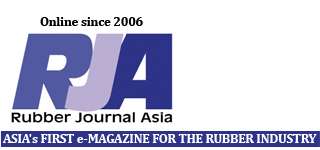 Bridgestone Corporation has recently announced the introduction of a new tyre assembling system, Examation, for its flagship Hikone plant. This state-of-the-art system combines Bridgestone’s proprietary information and communication technologies with artificial intelligence, and is designed to further improve quality and enhance productivity with regards to tyre production technologies. Bridgestone plans to leverage this system at existing and new factories globally to boost competitiveness on the production side of operations and enable the Bridgestone Group to deliver even higher quality products to a wide range of customers.
Bridgestone Corporation has recently announced the introduction of a new tyre assembling system, Examation, for its flagship Hikone plant. This state-of-the-art system combines Bridgestone’s proprietary information and communication technologies with artificial intelligence, and is designed to further improve quality and enhance productivity with regards to tyre production technologies. Bridgestone plans to leverage this system at existing and new factories globally to boost competitiveness on the production side of operations and enable the Bridgestone Group to deliver even higher quality products to a wide range of customers.
Bridgestone employed ICT and other cutting-edge technologies and began researching and developing tire production systems in the late 1990s with the aim of creating more functional tyres and improving quality. In 2002, the company developed the BIRD (Bridgestone Innovative and Rational Development) production system, which was the world’s first system for realising complete automation in areas of production ranging from components processes to product inspection processes. This system also was equipped to track conditions at manufacturing sites in real time.
The new Examation system incorporates more advanced versions of the information and communication technologies utilised in the BIRD system and also employs new proprietary technologies based on the new concepts of Bridgestone Intelligent Office (BIO) and Bridgestone Intelligent Device (BID). BIO and BID refer to new technologies that incorporate data analysis utilising Bridgestone’s core expertise in the processing of high polymer-rubber complex materials, which represents a core technology area. These technologies also employ proprietary algorithms that are made by combining analysis of big data collected from manufacturing processes with the techniques and know-how of Bridgestone’s experts in manufacturing process.
Based on the algorithms that exceed prior insight created by BIO, BID introduces a unique artificial intelligence that automatically controls production systems, thereby enabling automatic control of production processes and quality assurance judgments and procedures that were previously dependent on the human skills. The system allows us to minimise various production process disparities arising from differences in the human capabilities to realise levels of manufacturing precision not previously seen. Furthermore, the data collected through this system will be utilised in conjunction with data on existing tyre assembling machines, processes conducted before and after assembling, products, and various other areas to improve the overall quality of procedures throughout factories.
The characteristics of the advancedExamationtyre assembling system are as follows.
1. Improved quality
The Examationsystem is equipped with an artificial intelligence that uses sensors to measure the data of individual tyres based on 480 quality items. The Examation system uses this information to control production processes in real-time and thereby ensures that all components are assembled under the ideal conditions. This system helps promote ultrahigh levels of precision in tyre manufacturing, resulting in an improvement of more than 15% in uniformity when compared to conventional manufacturing process.
2. High productivity
Conventional manufacturing process involve layering all components in a single drum, meaning that the next step of the process could not be started until this layering was complete, and this results in longer production lead times. The Examation system, meanwhile, employs a multi-drum approach through which numerous drums are used to simultaneously advance several parts affixation processes, thereby doubling productivity in comparison to conventional procedures.
3. Automated processes with no skill requirements
Conventional manufacturing procedures were built on the assumption that assembling would be performed manually, which made the transfer of human skills and education crucial aspects of the manufacturing process. The Examation system enables production processes and quality assurance judgments that were previously dependent on manual labor. As a result, this system eliminates the various human disparities to realise higher levels of quality and efficiency.
